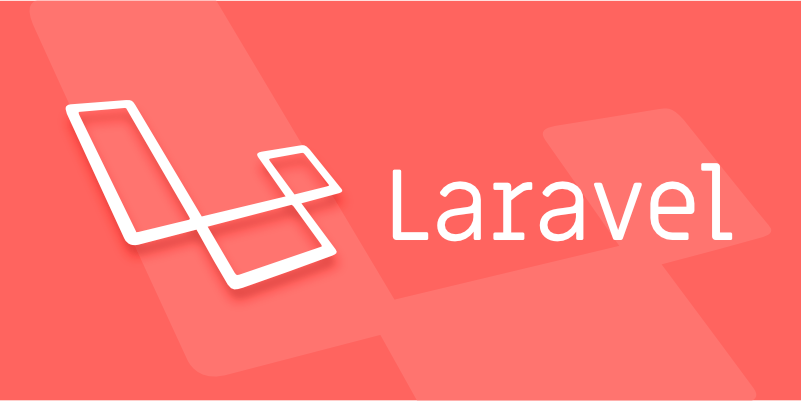Generating URLs for Named Routes in Laravel.
Jul 16, 2025 am 02:50 AMThe most common way to generate a named route in Laravel is to use the route() helper function, which automatically matches paths based on the route name and handles parameter bindings. 1. Pass the route name and parameters in the controller or view, such as route('user.profile', ['id' => 1]); 2. When multiple parameters, you only need to pass the array, and the order does not affect the matching, such as route('user.post.show', ['id' => 1, 'postId' => 10]); 3. You can directly embed the link in the Blade template, such as View the information; 4. When optional parameters are not provided, it will not be displayed, such as route('user.post', ['id' => 1]) output /user/1/post; 5. When adding query parameters, just write to the array directly, such as route('user.profile', ['id' => 1, 'tab' => 'settings']) output /user/1?tab=settings.

The most common method to generate a named route in Laravel is to use route() helper function. It can automatically generate corresponding URLs based on the route name, saving the hassle of manually splicing paths, and can also automatically handle parameter binding.

Use route() function to generate URL
Laravel provides a very convenient route() function specifically for generating links to named routes. You only need to pass in the route name and parameters, and Laravel will automatically match the corresponding path.
// Suppose your route is defined as follows:
// Route::get('/user/{id}', function () { ... })->name('user.profile');
// Use this in a controller, view, or Blade template:
echo route('user.profile', ['id' => 1]);
// Output: /user/1If you have multiple parameters, you can also pass in the array:

route('user.post.show', ['id' => 1, 'postId' => 10]);
Note: The order of parameters does not affect, Laravel will automatically match according to the route definition.
Use in Blade templates
In the Blade template, you can directly use route() to generate links to the <a> tag:

<a href="{{ route('user.profile', ['id' => $user->id]) }}">View Profile</a>This method is very practical when generating dynamic links, for example, each user in the user list page corresponds to a detail page.
Process optional parameters
If you have optional parameters in your route, just omit this parameter when passing the parameter:
//Route definition:
// Route::get('/user/{id}/post/{postId?}', ... )->name('user.post');
route('user.post', ['id' => 1]); // Output: /user/1/postOptional parameters will not appear in the URL if not provided.
URL with query parameters
If you need to add additional query strings, you can add:
route('user.profile', ['id' => 1, 'tab' => 'settings']); // Output: /user/1?tab=settings
These parameters do not affect route matching, but are only attached as query strings after the URL.
Basically that's it. Using route() function well allows you to flexibly and safely build links in Laravel to avoid maintenance problems caused by hard-coded paths.
The above is the detailed content of Generating URLs for Named Routes in Laravel.. For more information, please follow other related articles on the PHP Chinese website!

Hot AI Tools

Undress AI Tool
Undress images for free

Undresser.AI Undress
AI-powered app for creating realistic nude photos

AI Clothes Remover
Online AI tool for removing clothes from photos.

Clothoff.io
AI clothes remover

Video Face Swap
Swap faces in any video effortlessly with our completely free AI face swap tool!

Hot Article

Hot Tools

Notepad++7.3.1
Easy-to-use and free code editor

SublimeText3 Chinese version
Chinese version, very easy to use

Zend Studio 13.0.1
Powerful PHP integrated development environment

Dreamweaver CS6
Visual web development tools

SublimeText3 Mac version
God-level code editing software (SublimeText3)

Hot Topics
 What are policies in Laravel, and how are they used?
Jun 21, 2025 am 12:21 AM
What are policies in Laravel, and how are they used?
Jun 21, 2025 am 12:21 AM
InLaravel,policiesorganizeauthorizationlogicformodelactions.1.Policiesareclasseswithmethodslikeview,create,update,anddeletethatreturntrueorfalsebasedonuserpermissions.2.Toregisterapolicy,mapthemodeltoitspolicyinthe$policiesarrayofAuthServiceProvider.
 What are routes in Laravel, and how are they defined?
Jun 12, 2025 pm 08:21 PM
What are routes in Laravel, and how are they defined?
Jun 12, 2025 pm 08:21 PM
In Laravel, routing is the entry point of the application that defines the response logic when a client requests a specific URI. The route maps the URL to the corresponding processing code, which usually contains HTTP methods, URIs, and actions (closures or controller methods). 1. Basic structure of route definition: bind requests using Route::verb('/uri',action); 2. Supports multiple HTTP verbs such as GET, POST, PUT, etc.; 3. Dynamic parameters can be defined through {param} and data can be passed; 4. Routes can be named to generate URLs or redirects; 5. Use grouping functions to uniformly add prefixes, middleware and other sharing settings; 6. Routing files are divided into web.php, ap according to their purpose
 How do I run tests in Laravel? (php artisan test)
Jun 13, 2025 am 12:02 AM
How do I run tests in Laravel? (php artisan test)
Jun 13, 2025 am 12:02 AM
ToruntestsinLaraveleffectively,usethephpartisantestcommandwhichsimplifiesPHPUnitusage.1.Setupa.env.testingfileandconfigurephpunit.xmltouseatestdatabaselikeSQLite.2.Generatetestfilesusingphpartisanmake:test,using--unitforunittests.3.Writetestswithmeth
 What is the purpose of the artisan command-line tool in Laravel?
Jun 13, 2025 am 11:17 AM
What is the purpose of the artisan command-line tool in Laravel?
Jun 13, 2025 am 11:17 AM
Artisan is a command line tool of Laravel to improve development efficiency. Its core functions include: 1. Generate code structures, such as controllers, models, etc., and automatically create files through make: controller and other commands; 2. Manage database migration and fill, use migrate to run migration, and db:seed to fill data; 3. Support custom commands, such as make:command creation command class to implement business logic encapsulation; 4. Provide debugging and environment management functions, such as key:generate to generate keys, and serve to start the development server. Proficiency in using Artisan can significantly improve Laravel development efficiency.
 What are controllers in Laravel, and what is their purpose?
Jun 20, 2025 am 12:31 AM
What are controllers in Laravel, and what is their purpose?
Jun 20, 2025 am 12:31 AM
The main role of the controller in Laravel is to process HTTP requests and return responses to keep the code neat and maintainable. By concentrating the relevant request logic into a class, the controller makes the routing file simpler, such as putting user profile display, editing and deletion operations in different methods of UserController. The creation of a controller can be implemented through the Artisan command phpartisanmake:controllerUserController, while the resource controller is generated using the --resource option, covering methods for standard CRUD operations. Then you need to bind the controller in the route, such as Route::get('/user/{id
 How do I use Laravel's validation system to validate form data?
Jun 22, 2025 pm 04:09 PM
How do I use Laravel's validation system to validate form data?
Jun 22, 2025 pm 04:09 PM
Laravelprovidesrobusttoolsforvalidatingformdata.1.Basicvalidationcanbedoneusingthevalidate()methodincontrollers,ensuringfieldsmeetcriterialikerequired,maxlength,oruniquevalues.2.Forcomplexscenarios,formrequestsencapsulatevalidationlogicintodedicatedc
 Caching Strategies | Optimizing Laravel Performance
Jun 27, 2025 pm 05:41 PM
Caching Strategies | Optimizing Laravel Performance
Jun 27, 2025 pm 05:41 PM
CachinginLaravelsignificantlyimprovesapplicationperformancebyreducingdatabasequeriesandminimizingredundantprocessing.Tousecachingeffectively,followthesesteps:1.Useroutecachingforstaticrouteswithphpartisanroute:cache,idealforpublicpageslike/aboutbutno
 What is the .env file in Laravel, and how do I use it?
Jun 22, 2025 am 01:03 AM
What is the .env file in Laravel, and how do I use it?
Jun 22, 2025 am 01:03 AM
The .env file is a configuration file used in the Laravel project to store environment variables. It separates sensitive information from code and supports multi-environment switching. Its core functions include: 1. Centrally manage database connections, API keys and other configurations; 2. Call variables through env() or config() functions; 3. After modification, the configuration needs to be refreshed before it takes effect; 4. It should not be submitted to version control to prevent leakage; 5. Multiple .env files can be created for different environments. When using it, you should first define variables and then call them in conjunction with configuration file to avoid direct hard coding.






